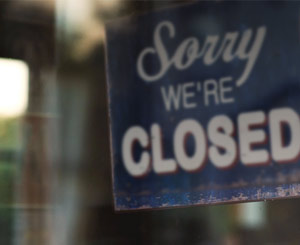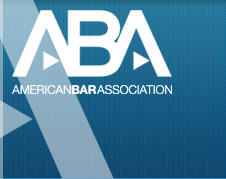Federal-state COVID-19 authority

As COVID-19 continues its assault on the country, residents in more than half the states have been ordered to stay home and businesses, including restaurants, health clubs and entire malls, have been closed as governors nationwide take extraordinary steps in an effort to protect public health. Under what legal authority do such orders fall – and are there legal limits on government actions during a health emergency?
Never have state and federal powers been tested to the extent that we are seeing today. The federal government’s power is limited to certain circumstances. Through the Commerce Clause, which gives Congress exclusive authority to regulate interstate and foreign commerce, the federal government has broad authority to quarantine and impose other health measures to prevent the spread of diseases from foreign countries, as well as between states although that has never been affirmed by the courts. Also, the federal Public Health Service Act authorizes the secretary of Health and Human Services to lead federal public health and medical responses related to public health emergencies.
Under the U.S. Constitution’s 10th Amendment and U.S. Supreme Court decisions over nearly 200 years, state governments have the primary authority to control the spread of dangerous diseases within their jurisdictions. The 10th amendment, which gives states all powers not specifically given to the federal government, allows them the authority to take public health emergency actions, such as setting quarantines and business restrictions.
With states adopting emergency measures, there are several broad public health tools that governors can invoke. They can, for example, order quarantines to separate and restrict the movement of people who were exposed to a contagious disease to see if they become sick. They can also direct that those who are sick with a quarantinable communicable disease be isolated from people who are not sick. And, as a growing number of governors have done in recent days, states can order residents to stay at home with exceptions for essential work, food or other needs. The governors’ orders, akin to shelter-in-place directives, affect tens of millions in the affected states. Curfews are another tool they can impose.
As outlined by the National Conference of State Legislatures, emergency health laws vary by state. When a 53-year-old Kentucky man who tested positive for COVID-19 refused to self-isolate, for example, state officials there obtained a court order to force him to isolate himself. They also posted a law enforcement officer outside the man's home.
The power to quarantine and take even more stringent measures in the name of public health has belonged largely to the states for nearly 200 years. In 1824, the Supreme Court drew a clear line in Gibbons v. Ogden between the state and federal governments when it came to regulating activities within and between states. In a unanimous ruling, then-Chief Justice John Marshall cited the 10th Amendment in saying that police powers are largely reserved to states for activities within their borders.
Those police powers, he explained, include the ability to impose isolation and quarantine conditions. Marshall wrote that quarantine laws “form a portion of that immense mass of legislation which embraces everything within the territory of a state not surrendered to the general government.”
In 1902, the Supreme Court directly addressed a state’s power to quarantine an entire geographical area. In Compagnie Francaise de Navigation a Vapeur v. Louisiana State Board of Health, the justices upheld a Louisiana Supreme Court decision that the state could enact and enforce quarantine laws unless Congress had decided to preempt them. Thus Louisiana could exclude healthy persons from an infested area populated with persons with a contagious or infectious disease (the Port of New Orleans), and that this power applied as well to persons seeking to enter the infected place, whether they came from within the state or not. The decision in Compagnie Francaise remains unchanged, and numerous courts have cited it as authority for state quarantines as recently as the Ebola outbreak.
While President Donald Trump has played down the need for the federal government to declare national quarantines or isolations, some interpret he has that power under the Commerce Clause, which governs commerce with “foreign nations and among” states. The federal government did not invoke the Commerce Clause during the global 1918–1919 Spanish Influenza pandemic, which killed an estimated 40 million worldwide, including 675,000 Americans.
The president could urge other governors across the United States to issue “stay home” orders following the lead of California and New York, which were the first states to issue such directives. But as a Congressional Research Service report explained in 2014 amid the Ebola threat, governors have broad powers to invoke restrictions in their state while the power of the president is significantly more limited by law and Supreme Court precedent.
The president, for instance, said on March 17 that he discussed “a national lockdown” with advisers to minimize the spread of COVID-19, but three days later he dismissed the idea. While some say such a centralized federal response would be more effective and needed, any executive order to that effect would be unprecedented and would likely lead to a court challenge on constitutional grounds.
Posted 3/23/2020Updated 3/30/2020
Other Fact-Checked Subjects:
- Hate Speech
- Flag Burning
- Pardons
- Affirmative Action
- Free Speech
- Ninth Circuit
- Forced Evacuation
- Executive Orders
- National Anthem Controversy
- Gun Laws
- Broadcast Licenses
- Revoking Visas
- Non-Citizen Terrorist Cases
- Religious Displays
- Congressional Seating
- Sexual Harassment
- Revoking Citizenship
- Influencing U.S. Elections
- Legal View of Treason
- Chain Migration
- Guns and Courts
- Students' Right to Protest
- Attorney-Client Privilege
- Recusal
- The President and the Law
- Immigrant Rights
- Revoking Security Clearances
- Confidentiality Agreements
- Resigned or Fired
- Deadly Force
- Birthright Citizenship
- Press Credentials
- Troops at the Border
- Election Re-Vote
- Emergency Powers
- Immigration Law
- Contempt of Congress
- Boycotting 2020 Census
- Electoral College
- Impeachment
- Separation of Powers
- Equal Rights Amendment
- Whistleblower Protection
- Pandemic Authority
- State Powers
- Employer Limits
- Police Immunity
- Federal Forces
- Hatch Act
- Attorney General Authority
- Frivolous Lawsuits
- Social Media and the First Amendment
- D.C. Statehood
- Executive Privilege
- Russian Sanctions
- Law of Genocide
- Stare Decisis
- Declassified




